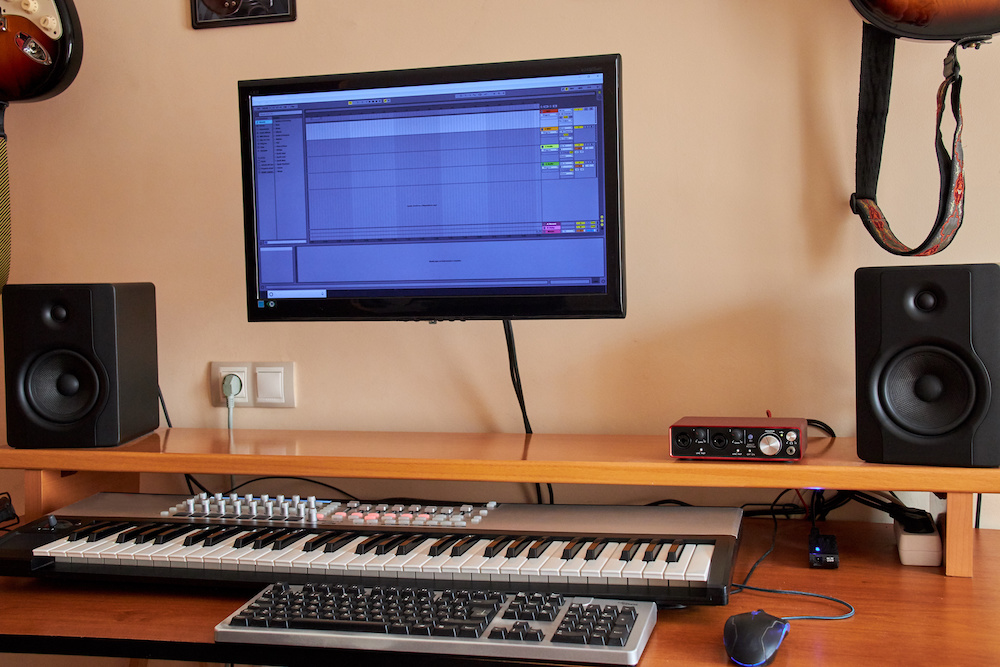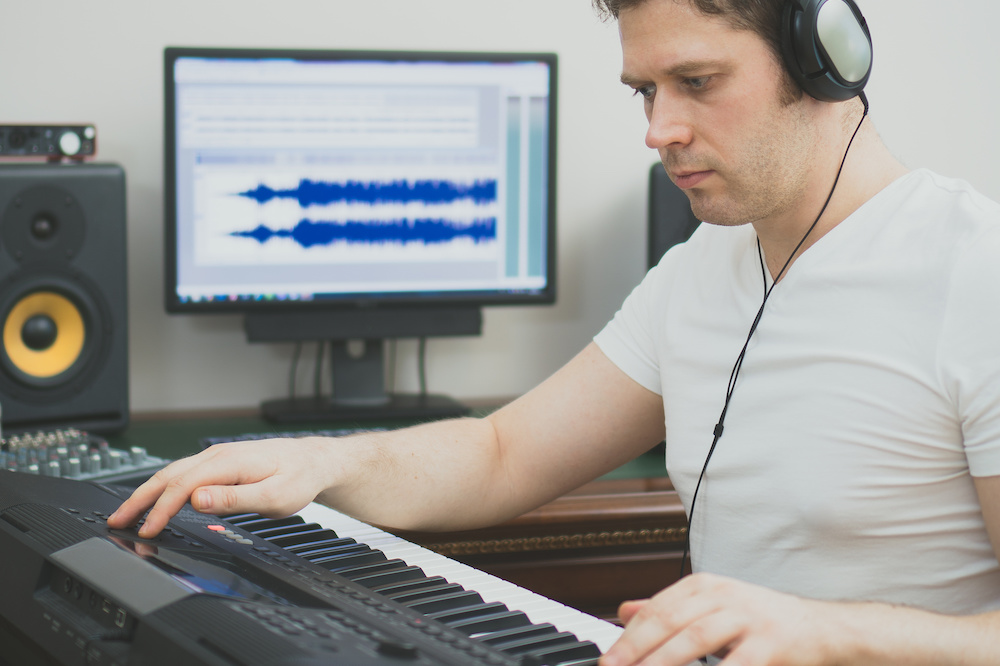How To Connect MIDI Keyboard To PC: A Handy Beginner’s Guide
We may earn a commission for purchases using our links. As an Amazon Associate, we earn from qualifying purchases.
As a music enthusiast or someone whose work is inclined to music production, you need to find tools to help you achieve the type of music you want to share with the world.
One such tool is the MIDI keyboard, which is a portable and multifunctional music device that can play the tones you need for your music.
It can also assist you in many possible ways in your audio production when attached to a PC.
Let's learn how to connect MIDI keyboard to PC and how important your MIDI keyboard is to audio production.
What Is a MIDI Keyboard?
A MIDI keyboard is a piano-like electronic musical device used to send input information from the controller device to your computer.
Its most important features that you need to make a note of are as follows:
Size
Portable MIDI keyboards come in different sizes but are generally smaller than a standard piano.
Their size will depend on the number of keys or notes. Some of the standards include 25-keys, 49-keys, 61-keys and 88-keys plus other features that can enhance the music produced.
Some MIDI keyboard users are satisfied with using the smallest MIDI keyboards because they can be quite convenient to carry around for personal audio projects.
That is, of course, as long as the keyboard has knobs and sliders they can use for mixing and tweaking the virtual controls of their music software.
Functionality
With a MIDI keyboard, producing music will be more interesting and realistic than pressing the same buttons for sending an email on your computer to produce the tones you like.
Some MIDI keyboards have velocity-sensitive keys, meaning you can play your notes either louder or quieter if your audio requires it.
Besides the piano, you can also play other software instruments, such as drums, guitar, and cellos, using your MIDI keyboard.
The MIDI keyboard is the easiest way to record, edit, and mix different software instrument tracks from the MIDI data you generate.
That said, the success of translating your MIDI data from your keyboard happens when you can harness it using a digital audio workstation installed on your computer.
How To Connect MIDI Keyboard To PC
Now that you are familiar with what a MIDI keyboard is and what it can do, you must know how to transfer the information to a PC that can synthesize your MIDI data.
Step #1: Check
To connect your MIDI keyboard to your computer, you first need to know whether your MIDI keyboard has a USB port or MIDI ports.
After checking what ports your MIDI keyboard has, you need to find a corresponding cable to connect your keyboard to your computer.
If your MIDI keyboard has a USB port, you will need a USB A to B cable.
This USB cable is also commonly called a “printer cable” since it is the cable most printers use to connect to computers.
If your MIDI keyboard has MIDI In and MIDI Out Ports, you should use a MIDI to USB cable.
Step #2: Connect
The possible ways on how to connect your MIDI keyboard to a PC, are as follows:
- USB Port
Connect the end of your USB-B cable into the USB port of your MIDI keyboard.
If your MIDI keyboard comes with two USB ports, the USB to Device and USB to host, plug in the USB to the host port.
Then, plug the end of your USB-A cable into your computer.
Ensure that your MIDI keyboard is turned on when you are ready to play.
Also, check if the digital audio workstation installed in your computer recognizes the cable or the MIDI keyboard connected to it.
- MIDI Ports
First, you must plug the MIDI In end of the cable into the MIDI Out port of the keyboard.
Then, plug the MIDI Out end of the cable into the MIDI In port of the keyboard.
Plug the USB A end of your cable into the computer.
Make sure you turn your MIDI keyboard on when you are ready to play.
Check if the digital audio workstation installed in your computer recognizes the cable or the MIDI keyboard connected to it.
Note: It may look confusing that the end of the MIDI In cable gets plugged into the MIDI Out port and the end of the MIDI Out cable into the MIDI In port of the keyboard.
But how the MIDI cables are connected makes sense because you want your MIDI data to go out of the MIDI controller and proceed to your audio component.
The way your cables are connected will allow the MIDI signals to reach your DAW on your PC.
When you have successfully connected your MIDI keyboard to your computer, the DAW will be able to recognize and translate the tones you play on your keyboard.

How To Record Audio Using Your MIDI Keyboard
The typical function of the MIDI keyboard is to play the software instruments built into the digital music studio of the computer.
You connect your MIDI keyboard to your computer, as discussed above, to transfer the MIDI files that your MIDI controller will produce.
Your MIDI keyboard will only serve as a digital information controller laying the groundwork for your grand audio production.
But if you want your MIDI keyboard to perform like an actual keyboard and record it, too, that is still possible.
The Benefits
People who have piano skills are the ones most likely to record audio from the digital piano.
Recording the actual sound of your keyboard is one way to add actual keyboard sounds to your recordings.
When learning to play a digital piano, a great way to check your progress is to record your piano exercises and listen to your recordings.
Knowing how to make an actual digital piano recording can help people who teach piano online to master recording the sound of your digital piano.
The Steps
Recording your live piano playing performance is also easy to do if you intend to capture an audio file.
Below are the suggested steps you need to follow.
Step #1: Find the Outputs
To record your digital piano audio, look for the line-level outputs of your keyboard, which are usually labeled as “Aux Out” or “Line Out.”
Step #2: Connect
For this, you will need a device that will transfer your keyboard’s sound, convert it to a digital signal then transmit it to your computer.
The audio interface is the equipment that will make a recording of your piano audio.
Ensure that the cables connecting your keyboard to your audio interface are compatible and connect the audio interface to the computer.
Step #3: Record
When each device is connected seamlessly, you can start playing your MIDI keyboard and record using your audio interface and the DAW installed on your computer.
Conclusion
Learning how to connect MIDI keyboard to PC is the first step to successfully record music tracks that you have played on your keyboard.
Another good thing to know is that you can record the audio output of your MIDI keyboard if you choose to do so.
Some music producers may not prefer their audio music coming from MIDI keyboards, while others may also want the sounds from the MIDI device included in the track.
Whatever file you may be recording, be it MIDI or audio file from your keyboard to your computer, for sure you have taken your audio production level up a notch and more by connecting it to your PC.
A music production software installed on your PC can create the type of music you have been raring to do as long as it's equipped with this modern technology.

